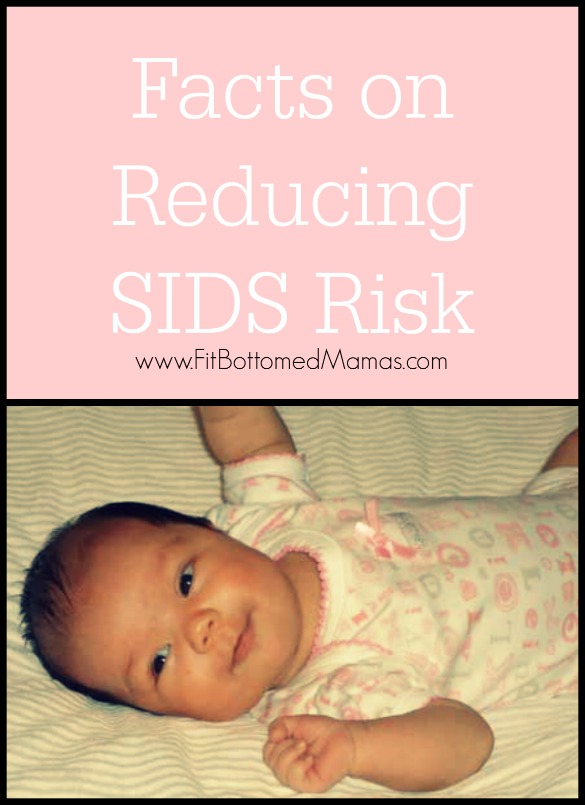Raising Awareness: Reduce the Risk of SIDS
 October is Sudden Infant Death Syndrome (SIDS) awareness month, so I wanted to take this opportunity to remind parents and parents-to-be about the risks for infants. Any amount of reading on SIDS—the sudden, unexplained death of an infant—will freak any parent out. Just the knowledge that these infant deaths occur instilled a healthy paranoia in my husband and me. So much paranoia that when my daughter started randomly turning over in her sleep, my husband would flip her back over if he went to check on her, just in case.
October is Sudden Infant Death Syndrome (SIDS) awareness month, so I wanted to take this opportunity to remind parents and parents-to-be about the risks for infants. Any amount of reading on SIDS—the sudden, unexplained death of an infant—will freak any parent out. Just the knowledge that these infant deaths occur instilled a healthy paranoia in my husband and me. So much paranoia that when my daughter started randomly turning over in her sleep, my husband would flip her back over if he went to check on her, just in case.
With one baby just graduating infancy and another on the way, the fear of SIDS is fresh in my mind. So today, Dr. Sean Daneshmand, a practicing maternal-fetal medicine specialist and founder of Miracle Babies, answers our burning questions on SIDS.
Facts on Reducing SIDS Risk
What’s the latest research on SIDS? Any progress being made on prevention and detecting those at risk? What age is the highest risk for SIDS?
SIDS is a diagnosis of exclusion. In the past years, the development of steps in regards to radiology, external examination, autopsy, histology, toxicology, microbiology, metabolic (15 percent of cases previously thought to be due to SIDS…most commonly the metabolism of fatty acids) and genetic studies have helped increase the accuracy of the diagnosis of SIDS. Due to the potential inconsistencies within the diagnosis of SIDS, the term “Sudden Unexpected Death of Infancy” (SUDS) is used often to describe all cases of unexpected infant deaths (SIDS being the leading cause of infant mortality between 1 month of age and 1 year of life in the United States). Ninety percent of cases unfortunately occur before 6 months of age, with the most between 2 and 4 months of age.
Is there anything in particular that increases a child’s risk (low birth weight, certain illness early in infancy, etc)?
Risk factors include young age (<20 years of age), maternal smoking, illicit drug use, no or late prenatal care, low birth weight or preterm birth, overheating, sleeping in a prone position, sleeping on a soft surface.
SIDS appears to occur in infants with a genetic brainstem abnormality when exposed to a trigger event such as maternal smoking in a vulnerable moment in the development of the central nervous system. Most recently, specific abnormality in serotonin signaling has been shown including abnormal receptor binding in the medullary portion of the infant’s brain. Serotonin influences a range of autonomic processes.
What tips should all new parents know to reduce SIDS risk?
- All infants should be placed to sleep in the supine position, including premature babies. Side sleeping is not recommended not the use of any sleep positioners (see FDA alert that came out last year).
- Avoid maternal smoking.
- Sleep on a firm bed without any loose blankets/sheets, soft cushions, stuffed animals or pillows in the bassinet.
- Avoid overheating.
- Seek prenatal care early.
- Preterm labor precautions.
- Pacifier use when placing the infant to sleep after 1 month of age to ensure that breastfeeding is established.
What is the current recommendation for co-sleeping? If parents choose to sleep with their infant in bed with them, what measures should be taken so the baby stays safe?
Do not sleep with your infant—accidents do happen!
A big thanks to Dr. Daneshmand for sharing his thoughts on SIDS. Safe sleeping, everyone! —Erin
Dr. Sean Daneshmand has been a practicing maternal-fetal medicine specialist at the San Diego Perinatal Center for the past nine years. He is also the founder of Miracle Babies. Established in 2008, Miracle Babies is striving to become the nation’s premier organization for providing emotional and financial support to the families of babies born premature or with serious health complications who subsequently have to spend a length period of time in the NICU (Neo Natal Intensive Care Unit).
